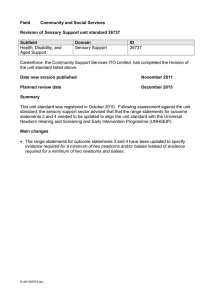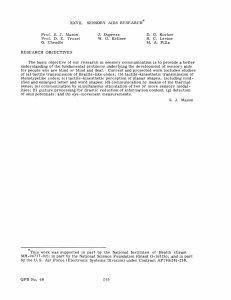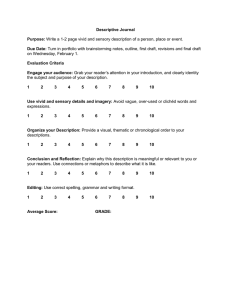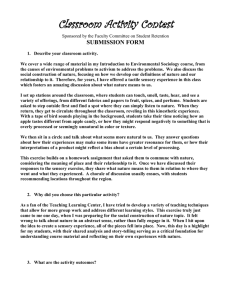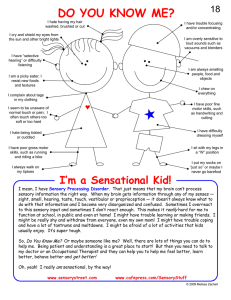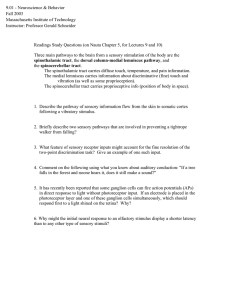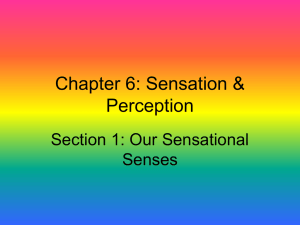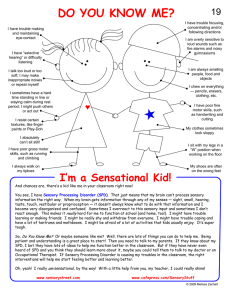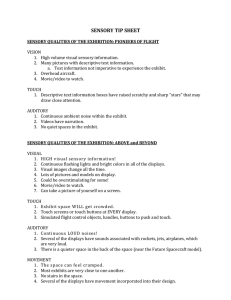March 3, 2011 Flex Day Faculty Discussion Session
advertisement
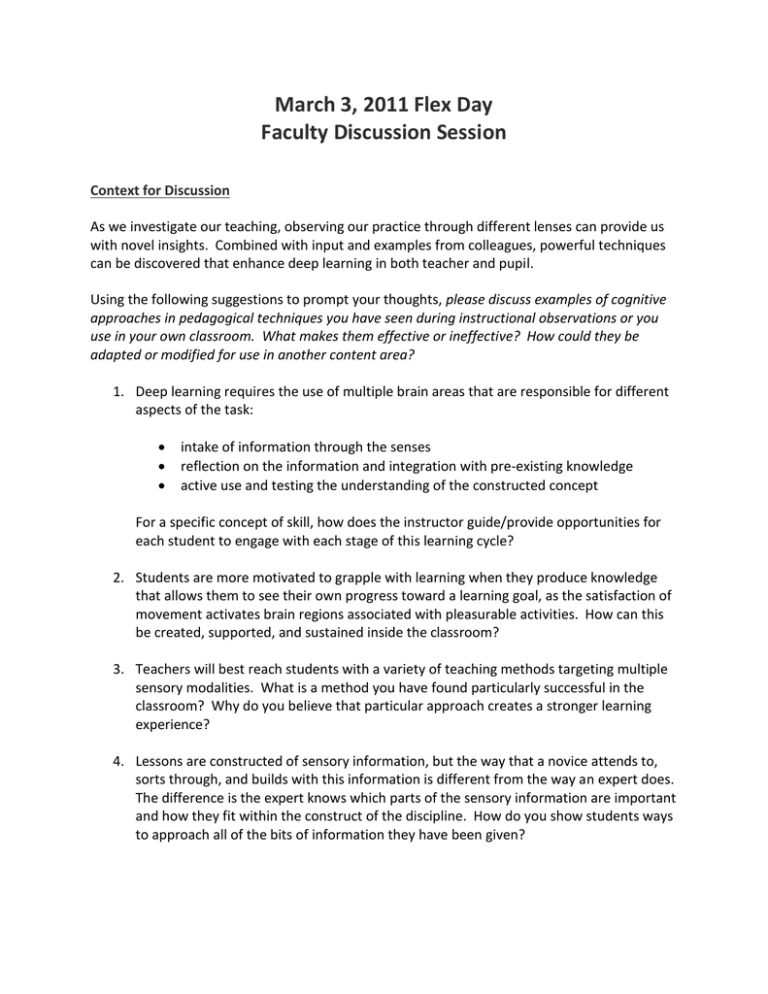
March 3, 2011 Flex Day Faculty Discussion Session Context for Discussion As we investigate our teaching, observing our practice through different lenses can provide us with novel insights. Combined with input and examples from colleagues, powerful techniques can be discovered that enhance deep learning in both teacher and pupil. Using the following suggestions to prompt your thoughts, please discuss examples of cognitive approaches in pedagogical techniques you have seen during instructional observations or you use in your own classroom. What makes them effective or ineffective? How could they be adapted or modified for use in another content area? 1. Deep learning requires the use of multiple brain areas that are responsible for different aspects of the task: intake of information through the senses reflection on the information and integration with pre-existing knowledge active use and testing the understanding of the constructed concept For a specific concept of skill, how does the instructor guide/provide opportunities for each student to engage with each stage of this learning cycle? 2. Students are more motivated to grapple with learning when they produce knowledge that allows them to see their own progress toward a learning goal, as the satisfaction of movement activates brain regions associated with pleasurable activities. How can this be created, supported, and sustained inside the classroom? 3. Teachers will best reach students with a variety of teaching methods targeting multiple sensory modalities. What is a method you have found particularly successful in the classroom? Why do you believe that particular approach creates a stronger learning experience? 4. Lessons are constructed of sensory information, but the way that a novice attends to, sorts through, and builds with this information is different from the way an expert does. The difference is the expert knows which parts of the sensory information are important and how they fit within the construct of the discipline. How do you show students ways to approach all of the bits of information they have been given? 5. What are techniques for discovering and validating what students already know (viewpoints, motivating factors, personal experiences, areas in need of clarification)? How can we harness their existing knowledge and experiences to establish a useful starting point for the explanation of a topic? 6. We learn things that are of personal importance because these memory circuits are highly influenced by emotional centers of the brain. Personal connections drive intrinsic motivation to learn. As teachers we can easily provide the extrinsic motivations of points and grades, but often we have to convince the learner to "buy in" to the importance of the skills and content we wish to impart. How can you discover, create, and nurture intrinsic motivation in individual students and encourage them to become independent learners?



